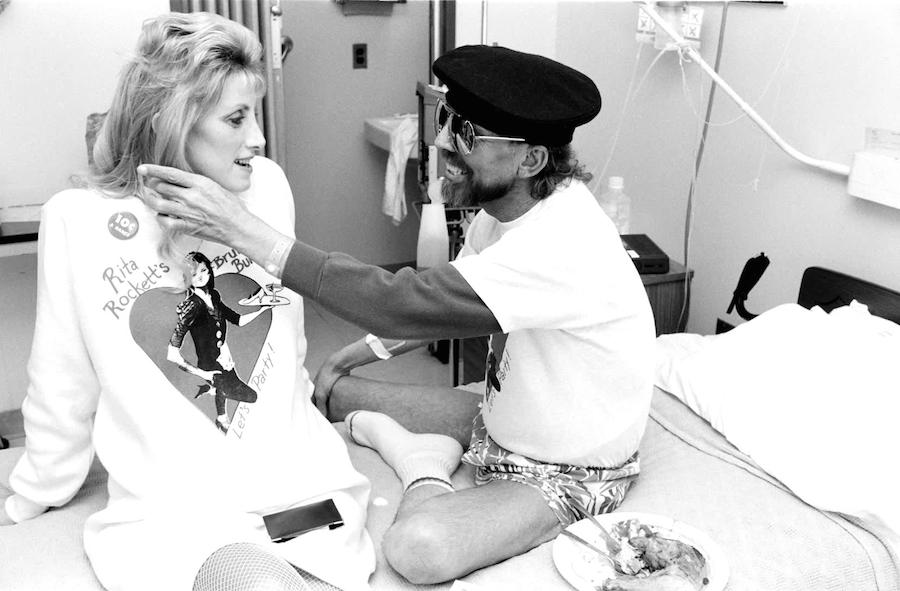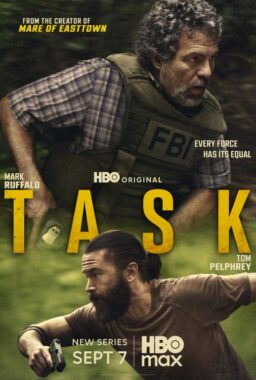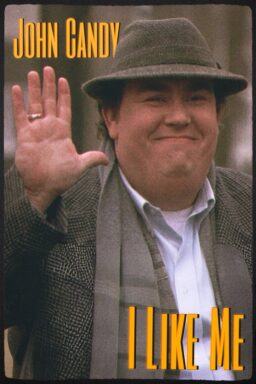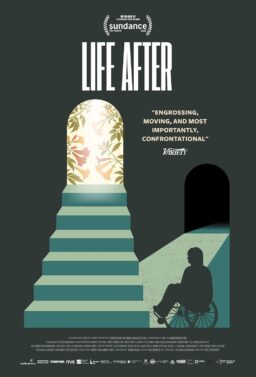When it comes to combating an epidemic, the deadliest killer of all is silence. President Ronald Reagan failed to publicly address the AIDS crisis until it had claimed the lives of 21,000 people, including his own friend, Rock Hudson. It didn’t take much digging to unearth the blatant homophobia fueling so much of the hysteria and misinformation regarding the disease, resulting in William F. Buckley’s suggestion that all “AIDS carriers” be tattooed with what was, essentially, a scarlet letter.
In the midst of this dehumanizing discourse, the fifth floor ward at San Francisco General Hospital stood as a shining beacon of love and acceptance, welcoming those afflicted with open arms. Paul Haggis and Dan Krauss’ eye-opening and deeply moving documentary, “5B,” is named after the ward where this audacious treatment was birthed in 1983, kickstarting a historic legacy of care that encompassed two decades. The staff demonstrated how a tangible human connection could be maintained without compromising one’s safety or professionalism.
Interwoven with the film’s numerous other story threads is that of inpatient nurse Guy Vandenberg and his partner, Steve Williams, who was diagnosed with AIDS and spinal tuberculosis in 1999. Williams’ stunning recovery could be the subject of a film in itself, and it’s one of many topics that the couple discussed with RogerEbert.com during their recent visit to Chicago.
Having been born in 1986, my earliest memories of AIDS were the PSAs that CBS jarringly aired in between Christmas specials that my parents had taped off the television. They featured celebrities delivering abrupt, urgent bulletins without very much context.
Guy Vandenberg (GV): Yeah, that is true. I think that may have been a little too scary for people at that point. However, it was nice to have facts on TV. We don’t see a lot of that anymore. I very much remember the Surgeon General, C. Everett Koop, sending out an educational brochure about AIDS to every American that also didn’t have a lot of context. It just stated facts and was pretty dry, but it was revolutionary in its own way. Just the fact that the government finally did something fact-based was a sign of progress. Koop was a conservative and he was definitely religious. He’s not a natural ally, but he pushed the Reagan government as far as he could, and he wasn’t reappointed, so he took a hit for it.
Now we know that people don’t relate to that sort of approach as much as when it does have a context with a personal story—when it is made real. I think that happened when Ryan White, the young man in Indiana, was not readmitted to school after being diagnosed with AIDS, and Elizabeth Glaser, wife of the man who played Starsky on “Starsky and Hutch,” received an HIV-contaminated blood transfusion. These stories were crucial in showing the public that the virus doesn’t discriminate, that people shouldn’t think that they are not at risk, and that they can do very common sense things to make sure that they don’t get infected. Those PSAs were the best that we could hope for at that time, until folks like Hank Plante, who is in the film, took it further and shifted the focus toward human interest stories by interviewing real people.
How specifically did the medical advances made in the mid-’90s provide Steve with a second chance at life?
Steve Williams (SW): If I had gotten sick two years earlier, I wouldn’t be here right now. Antiretroviral drugs, or ARVs, had just come out when I was diagnosed, so it was total luck. For the nurses in 5A who tended to me when I was at my lowest, they helped me get better.
GV: Though 5B is where it all started, it was one of the smaller units, and within no time, it was exploding. We didn’t have enough beds, so they switched the ward to 5A, which was twice the size. I actually joined the team when they were already at 5A, and that’s where it stayed for most of the time.
SW: The ARVs are pills that I take every day. Yet since I was battling spinal tuberculosis at the same time as my AIDS diagnosis, my brain was swollen, and that’s why I went into the coma.
GV: When somebody with a really weak immune system gets an infection, even one that has already been treated, like in his case, they start taking antiretrovirals in order to ensure that their immune system gets strong again. It starts attacking the infection, even the little bits of tuberculosis debris—dead organisms, basically—that are left over, swimming around. Because the tuberculosis was in his spine, it impacted his brain, which began swelling. Since the brain has no room to swell, because it is contained, it shut off and put him in a coma. I was told to take him home and let him die peacefully, or take him to a hospice. But then his doctor said, “I think this is inflammation. We could use some steroids.” And within three days, it worked.
SW: Suddenly, I was awake, but I couldn’t walk around. It took me a long time before I could start living normally again. I had to relearn how to walk and talk.
GV: And now we know how to deal with these symptoms. Steve’s treatment was literally written up in a medical journal to teach the public on what to do in this sort of situation.
What makes the staff in “5B” so inspiring is how they go about placing the “care” in health care, something conspicuously lacking from numerous experiences endured by my mother, who has multiple sclerosis.
GV: As a matter of fact, I was diagnosed with MS a number of years ago, and wanted to join a group of folks living with it. I went to one support group that was really depressing, and it was not at all what I needed. Then I found these young people who had started their own group called MS Crew—Magnificently Sexy Crew—and we just have fun. We talk about everything and we laugh at stuff, and that is so important. The most important thing, I think, is the human connection. Like nurse Mary Magee said in the film, at our unit, we were allowed to love our patients. There is a role for professional boundaries, though it’s important to not just apply technology, but to actually see the person, especially if that person is not somebody like you. This is a beautiful challenge, and it lifts everybody up. It lifts you up as a caregiver or a volunteer to see the dignity in somebody who may be sick, but who is an interesting person with all sorts of complexities.
SW: Something I really remember from being in 5A is that people were always touching you. My doctor and the nurses would come in and they’d all give me a huge hug. It was constant.
Some of the statements made by Dr. Lorraine Day in the film carry traces of jealousy, in regards to the attention received by doctors in your ward, while dubbing the patients you treated as “loaded weapons.”
GV: I thought it was beautifully done how her scenes were handled in the film. She was, after all, the first female head of orthopedics in a major trauma center, and she had legitimate concerns about working with lots of blood in an OR. Then over time, you sense that there’s more than mere concern behind her words. Like nurse David Denmark says in the film, HIV became—for a lot of folks—a vehicle to express their dislike and sometimes outright hatred of segments of the population, and that is a lesson we cannot forget.
We see it happening in so many ways today, whether it’s in relation to fear of immigrants or trans folks or Ebola victims. It can happen again like that [snaps fingers], and we need to guard against it. My parents narrowly survived the fascist occupation of the Netherlands, and a lot of my generation narrowly survived the HIV epidemic. We need to make sure that we instill in the next generation of health care providers, as well as every young person, a knowledge of the warning signs when this kind of prejudice threatens to rear its head.
I couldn’t help being reminded of Trump’s barbaric treatment of immigrants when learning of Reagan’s plan to quarantine those stricken with AIDS. It’s just another method for erecting a wall to otherize.
GV: I’m so glad you said that.
SW: Yes, it’s exactly the same situation!

I was so moved by the story of Mary Asbury, who develops empathy for her nephew, Gregory Shane Harjo, a patient in 5B, even though his orientation conflicts with her religious beliefs.
GV: We hung out with her in LA, and she is just a lovely person. She knows what her church tells her—it’s somewhere there, deep within—but her heart is open.
SW: That whole Shane story was tragic. He was so young, but he was one of so many people who were going through the same thing. But luckily for him, he was at San Francisco General when caregiver Rita Rockett was there. She was kind of the glue between the patients and the professional staff at Ward 5B, and she knew exactly what to do. I’m not saying that the staff couldn’t relate to them, because they could, but they still had a job to do, and she was kind of separate from that.
To what extent were cameras allowed in the hospital rooms?
GV: There is much more archival footage than what you see in the documentary. As Cliff Morrison, founder of Ward 5B, has noted, this sort of filming was encouraged. We invited it. Of course, patients and their families had to agree to it, but we all wanted for everyone to see that we were dealing with people and not some strange kind of creatures or space aliens. These were real people with real families, and we were loving them. Having that on camera was an extension of the human connection that we sought to foster, and it is every bit as important right now. When you see kids in ICE custody who are placed in cages, you know in your mind and in your heart that it is wrong, regardless of your beliefs. You don’t put a kid in a cage, it’s that simple—or any human being, for that matter, especially for fleeing an unsafe situation in their own country. Its crazy!
Julianne Moore has been a vocal champion of your film ever since she joined you on the red carpet at Cannes for the “5B” premiere. Was that a last-minute development?
SW: We found out we were going to Cannes about two weeks before the festival began, so it was last-minute for all of us. [laughs]
GV: The film was entered really late, but it got invited. The scouts for the festival see so many films, but when they saw our’s, they said, “We want it in Cannes.” Then the reception it earned was so positive that it went from a category of films also being screened to actually contending for the Best Documentary prize. It was so well-received that a number of celebrities turned out for the screening in addition to Moore, such as Miles Teller, Priyanka Chopra and Keiynan Lonsdale. They were all drawn to the film.
Having this film be commissioned by a company like Johnson & Johnson seems like a crucial step forward in removing the stigma associated with AIDS.
GV: They funded “5B.” The company has been trying to promote the profession of nursing, and of course, their subsidiary, Johnson, makes HIV drugs, so they have been highly involved in the epidemic.
Among the most revealing interview subjects in the film is Mary Magee, previously identified as Jane Doe after an accidental needle stick while working in 5B caused her to contract HIV.
GV: Had she been open about her status at that time, she might’ve lost her health insurance, but there were other reasons for her anonymity as well. People still get shunned by their families and loved ones. It happens all the time, so these fears are very real. The reasons behind her eventual decision to make that step and allow her identity to be known was twofold—it was to advance the public dialogue, and to relieve her of the secret, which is difficult to keep and too important to hide. When Steve got better, we started working in a rural district of South Africa, and there were lots of needle sticks in their hospital because they didn’t have access to safe equipment, such as needles that could be recapped.
There is technology available to make things safer for these nurses, so when I told them Mary’s story, they got fired up. Suddenly the danger of contracting HIV wasn’t some hypothetical threat, it happened to a real nurse—one of them—in the United States, and it created change. The hospital administrators had to listen and they began to offer post-exposure prophylaxis (PEP) as well as safe needle equipment. I didn’t have a film to share with them back then, but I knew the story and I knew Mary, so that’s how I was able to motivate them to take the necessary steps in ensuring a safe hospital environment. People relate to people, not to abstract concepts.
My grandma, Marian Tompson, also happens to be co-founder of La Leche League, and has traveled the world advocating breastfeeding in AIDS-stricken countries.
SW: When we were working in Tanzania, there was a lot of controversy over whether women should breastfeed their children, but if they are on medication, then there is really no reason why they can’t.
GV: Especially since formula feeding is not affordable for a lot of folks. When women have a choice, they should go with either breastfeeding or consistent formula feeding, because the mixed feeding, where you switch back and forth, creates the highest risk for transmission. That is stuff we’ve learned over the years, and we continue to learn new things all the time.
Header photo of Ward 5B caregiver Rita Rockett visiting with a patient is courtesy of Ken Kobré.












